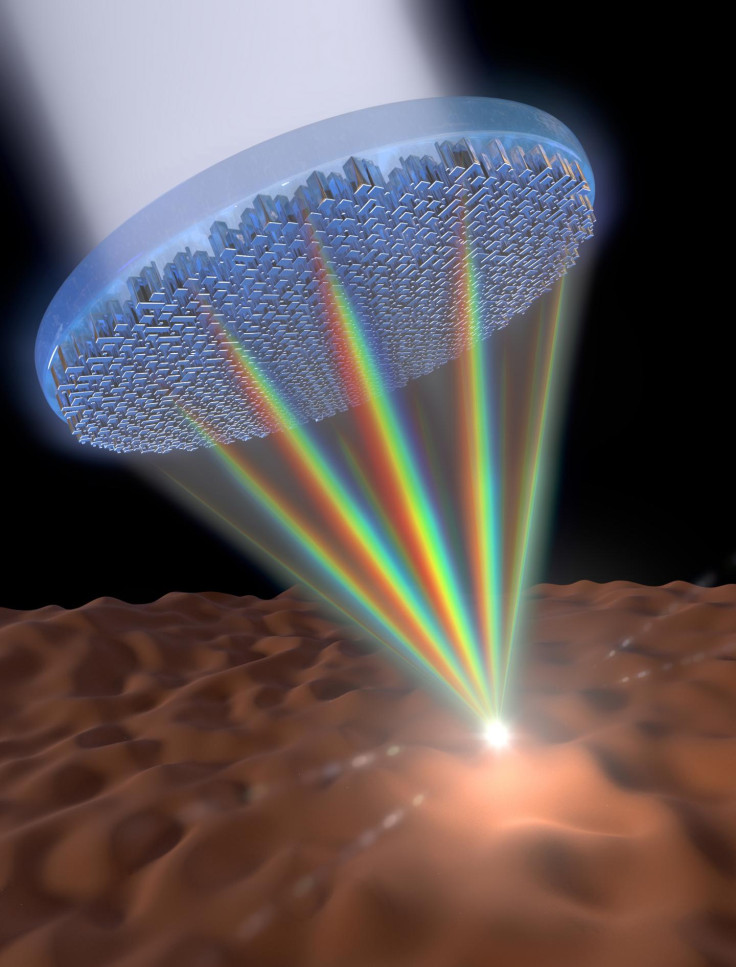Scientists develop a tiny lens which could revolutionise Virtual Reality
Metalenses are flat devices which use specially engineered nanostructures to focus light.

Technology tends to shrink over time as scientists come up with ever more ingenious ways to reduce size and weight without compromising on quality. But optical lenses, found in everything from cameras to microscopes, have largely been exempt from this seemingly inevitable trend.
However, we are now on the cusp of a revolution in optical technology. Metalenses are tiny, flat devices which use specially engineered nanostructures to focus light. They essentially mimic the way traditional curved lenses work, while taking up just a fraction of the space.
Until now, metalenses have been limited in the spectrum of light they can focus efficiently. But a newly published study describes a tiny, ground-breaking lens developed by researchers at Harvard University which can focus the entire visible spectrum of light on single point in high resolution - something that has only been achieved before with multiple traditional lenses stacked on top of each other.
Focusing the entire visible spectrum, including white light, is difficult because each different wavelength – each representing different colours – moves through materials at different speeds. For example, blue wavelengths will move slower through a glass lens than red wavelengths, meaning the two colours will reach the same location at different times.
This results in distortions known as chromatic aberrations. To mitigate these imperfections, cameras and other optical instruments are fitted with curved lenses of different thicknesses and materials, increasing the weight and size of the devices.
"Metalenses have advantages over traditional lenses," said Federico Capasso, senior author of the research from the Harvard John A. Paulson School of Engineering and Applied Sciences. "Metalenses are thin, easy to fabricate and cost effective. This breakthrough extends those advantages across the whole visible range of light. This is the next big step."
The new paper-thin metalens employs arrays of tiny nanostructures made from titanium dioxide to focus light equally so that all wavelengths arrive at the focal point at the same time, eliminating chromatic aberrations.
This design "dramatically reduces thickness and design complexity compared to composite standard lenses," said Wei Ting Chen, first author of the study published in Nature Nanotechnology.
Despite the technology being in its infancy, the quality of images produced using metalenses can exceed that of those created with traditional lenses. Furthermore, because of their tiny size and less complex design, they will be much easier to mass-produce than curved lenses.
The team are now one step closer to their goal of incorporating the lens into common optical devices, such as cameras, and to scale up the design to about 1 cm in diameter, which could open up new possibilities for use in virtual reality goggles and other emerging technologies.





















